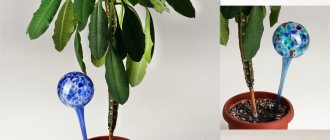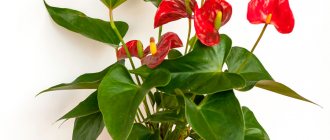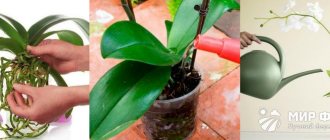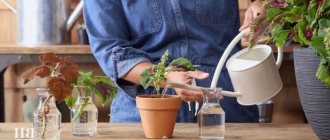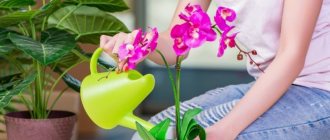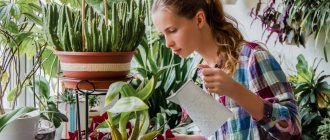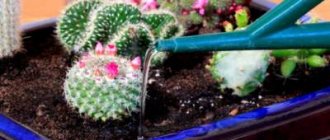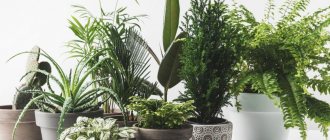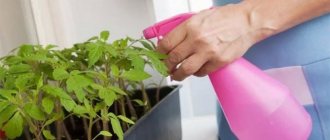When planning to leave home for a while, many are tormented by the question of how to preserve flowers during their vacation without watering. If you do not have the opportunity to leave house plants to relatives or friends, or entrust someone with the keys to your apartment while you are away, the tips collected in the article will help solve the problem.
Don't be afraid to leave indoor plants unattended for a long time
How to water indoor flowers on vacation? Preparation
Houseplants need watering all year round, but watering houseplants during the holidays often causes difficulties or concerns for many of us.
The closer we leave, the more often the question arises of how to water indoor plants so that they survive until we return. Therefore, every gardener tries to ensure sufficient watering of indoor flowers during the holidays in different ways and methods.
We will tell you about different watering methods and give useful recommendations.
An important point in providing indoor plants and flowers with moisture is to prepare them for the lack of usual watering. Carrying out preparatory work significantly increases the plant’s resistance to future “drought”.
- Depending on the types of plants and indoor flowers, they can do without standard watering from 7 to 15-20 days.
If there is no watering for more than 20 days, it is best to use an automatic watering system. We will talk about it later in the article.
- Carry out the last feeding of indoor plants and flowers no later than 14-16 days before departure. After feeding, plants need more water to absorb minerals.
- 2-3 days before departure, cut off all buds and flowers from house plants, as well as as many leaves as possible (several large ones or more small ones, but in moderation, without much loss for decorativeness). The more green mass, the faster the plant evaporates moisture. During pruning, check all plants and flowers again for diseases and pests (first inspection 7-8 days before).
- Move plants and flowers deeper into the room to reduce the air temperature and light level around them, and as a result reduce the rate of water evaporation. Place pots of plants as close to each other as possible. This will create a zone of high humidity in the room.
- Before leaving, water your houseplants a little more than usual to ensure the soil mixture is well saturated with water. Some types of them are best watered using the immersion method. After watering, it would be good to surround the pots with damp moss.
Removing pots from sunny places
To ensure that the soil in pots dries out more slowly, all flowers in the house should be removed from sunny places before leaving. A good solution, for example, would be to place them in the corners of the apartment, where only diffused light penetrates.
In this case, it is advisable to place flowers in the corners in large groups. In this case, they will begin to create a comfortable microclimate for each other.
The doors in the room where the flowers will be placed should be left open during the holidays. This will provide the plants with the ventilation they need. Also, when leaving, you need to open the doors to those rooms in the house that have ventilation outlets. Usually this is a bathroom and a kitchen.
Watering indoor flowers during the holidays: affordable and effective
- After abundant watering, indoor plants are placed in a large container (basin, baby bath).
- Pour water (2-3 cm) into the bottom and pour wet expanded clay (8-12 cm) onto the bottom and sides of the flower pots.
- The trays must be removed from the pots. Therefore, the pots should not come into contact with water, otherwise the roots may freeze; they must be placed on a layer of expanded clay above the water.
- The only possible disadvantage of this method is that if at least one plant is already affected by a pest, then they can easily move on to the rest.
- This method is especially suitable for plants in clay and ceramic pots.
GAIN. This method can be strengthened by adding a layer of moss to the top layer of the soil mixture, this is especially important for plants in plastic pots.
Clay and ceramic pots can also be placed inside plastic ones, and the space between them can be filled with damp expanded clay or moss.
This method allows most plants (depending on the time of year, type, condition, size and development phase of the plant) to last from 6-7 to 14-20 days without watering.
- For maximum effect, it is recommended to supplement this method with wick or drip irrigation (plastic bottle).
Cover with a “dome”
Another way to help plants survive your departure is to cover them with a “dome”, which can be any suitable transparent container, for example, a glass jar or a plastic bottle without a neck. Thanks to this simple method, evaporating moisture will condense under the “dome” and flow back into the pot.
Note! The edges of the “dome” should not extend beyond the pot, as otherwise the condensed water will flow beyond its limits.
How to make drip irrigation for indoor plants with your own hands? Traditional methods
If you do not have the opportunity to use the previous method, then you can use the following drip irrigation options for indoor plants and flowers.
Experts believe that these drip irrigation systems are best used as an addition to watering during the holidays, but in some cases they can and even should be used on an ongoing basis.
The Flower Festival magazine reminds that the effectiveness of drip irrigation methods can vary significantly, and in order to achieve maximum effect, the system must be tested for quite a long time.
Wick watering
To do this, take a wick (a fabric cord), place one end inside the pot in circles on the bottom (before replanting the plant), and the other end in a vessel (pot) with water.
The pot with the plant is placed on top of a vessel with water, the wick absorbs the water and the moisture rises up to the bottom of the pot. This method is well suited for watering violets (Saintpaulias), including on an ongoing basis.
.
In order not to replant the plants before vacation: the cord is placed on top of the pot and sprinkled with soil mixture on top, and the other end in a vessel with water (bucket, basin), which is placed above the pot with the plant.
EXAMPLE. The pot is on the floor and the bucket is on the stool. Depending on the size and type of plant, the number of wicks can vary from one to 5-7.
- In stores you can find ready-made wick irrigation systems.
Plastic bottle
Drip irrigation from plastic bottles is well known to many gardeners; it is successfully used for indoor plants. In our opinion, making drip irrigation from a plastic bottle with your own hands is not difficult.
- The most common version of the system: a hole is made in the bottle cap and at its bottom using a hot nail, and the bottle is secured bottom up above the pot.
After installation, you need to measure how much liquid left the bottle in 24, 72 and 144 (6 days) and 288 (12 days) hours and how wet the substrate is. Depending on the result obtained, change the size of the hole on the lid and/or the volume of the bottle.
- The drip irrigation system from plastic bottles is simple and cheap, so it is easy to experiment with and implement, including in the garden, greenhouse or vegetable garden.
Prevention before long absence
First of all, I suggest you familiarize yourself with useful tips to reduce moisture consumption by plants, and the necessary measures before leaving on a business trip or vacation:
- Regardless of the selected method of automatic watering, on the day of departure, carry out abundant watering and irrigation from a sprayer with soft water.
- A day before departure, give all your pets a bath day: place flowerpots at the bottom of the bath, spray the leaves of flowers from a warm shower, and spray capricious specimens with a spray bottle. After such irrigation, the aboveground part of the flowers and the soil will be abundantly saturated with moisture, which will stop the loss of liquid for several days.
- Watering before vacation has worked well by immersing an earthen ball with rhizomes in water for 20-30 minutes.
- Do not fertilize before leaving. A lack of moisture will not allow the roots to absorb nutritional compounds. Plan to water with fertilizers 1-2 weeks before your business trip.
- Move all pots to a cool, dark place or install shades on windows that receive direct sunlight. In this mode, the evaporation of moisture from the soil surface is significantly reduced.
- Place all the flowerpots side by side so that the most capricious and moisture-demanding plants are in the center, surrounded by other flowers.
- During the flowering period, the amount of water consumed increases. Remove all excess branches, leaves (if possible), buds, flower shoots and flowers. Don’t regret them, you still won’t be able to enjoy flowering due to the absence, and any pruning starts the rejuvenation processes and stimulates the formation of new flower buds.
Drip irrigation systems for indoor plants
We present to your attention options for drip irrigation systems for home flowers.
1. CAPILLARY MAT FOR TRAY IRRIGATION
This special covering made of hygroscopic material is placed in any convenient flat place, and a garden film is laid under it. The edge of the capillary mat or its cut strip is moistened with water and lowered into a container with liquid.
- For home use, do not buy capillary geotextiles; they are made from recycled materials.
CAPILLARY MAT PRICE : about 3 euros per linear meter of a roll 100 cm wide. For example, Vivapol (Germany) with Aquafol protective coating and a moisture capacity of three liters per m2. The width of the rolls is different: 100, 125, 150 or 200 cm, color black or white.
2. IRRIGATION TRAY FROM CAPILLARY MATS
This automatic watering device consists of three parts: a capillary carpet, an external and an internal tray.
The inner tray is covered with a capillary carpet, on top of which a pot with a plant is placed. The inner pan is placed in the outer pan, into which water is poured. The carpet absorbs water and transfers it to the plant.
- Similar designs are produced by many companies (Garland (England) and others), which assure that the plant will live autonomously for up to two weeks.
PRICE : price on Amazon is 7-8 euros per pallet with dimensions (55 cm length, 31 cm width, 3 cm height) and a capacity of 1.8 liters of water made from environmentally friendly materials.
3. AQUA GLOBES TYPE DEVICES
Devices like aqua globes (watering tubes, glass watering sphere, etc.) are becoming widespread: a glass flask with a ceramic cone. The structure is placed in the soil mixture, where it evenly moistens the substrate due to its capillary-porous structure.
Aqua globes are one option.
AQUA GLOBES PRICE : on Amazon 10-12 dollars for 2 pieces, in the CIS in stores you can find it for about three dollars per piece.
- TIP: if there is no need for a beautiful appearance, then watering a device made from a plastic bottle will not be much worse, but it will be free.
4. CERAMIC CONES FOR WATERING PLANTS
Ceramic cones can be sold separately without a water container (for example, Blumat Tube Automatic Plant Waterer), and they receive moisture through a thin hose from a water container.
The lower part of the cone is made of special clay, which analyzes soil moisture and releases moisture after sufficient drying.
By changing the height of the plant pot in relation to the water container, you can regulate the amount of moisture received.
Blumat irrigation system
BLUMAT SET PRICE: on Amazon 12-15 euros. Separately, a cone from an unknown manufacturer can be purchased in the CIS for approximately $1.50 apiece.
5. SMART FLOWER POT WITH AUTO-WATERING
Smart pot systems for flowers with automatic watering are becoming increasingly popular, for example, from the website smartpots.com_ or.
This device is easy to plant and maintain: you only need to add water once every 20-25 days.
- In Europe and the USA, many people use smart pots everywhere in the garden, growing garden crops (tomatoes, cucumbers), strawberries.
SMART POT PRICE: Average on Amazon from $13 to $35 per pot depending on its size and capacity. Aliexpress has a large number of different options and at different prices.
6. HYDROGEL FOR HOUSE PLANTS
Hydrogel is a special polymer that absorbs a large amount of moisture (two grams can absorb up to 200-500 ml, according to various sources) and slowly releases it to the plants. Hydrogel for indoor plants is mainly found in the form of granules or balls, colorless or colored.
- Ideally, the plant should already be planted in a soil mixture with hydrogel (they recommend two grams for about 800-1000 grams of substrate) and before leaving you just water it generously and that’s it.
Now hydrogel granules with complex fertilizer have appeared, which, in addition to moisture, supply the plant with nutrients.
According to manufacturers, on average, such hydrogel granules last for 3-4 years.
OTHERWISE: before releasing, soak the hydrogel in water for 7-8 hours, and then sprinkle the granules on top of the soil mixture and cover with moss. If the root system is not of a superficial type, then the hydrogel can be buried 2-3 cm deep.
HYDROGEL PRICE: on aliexpress: 7 colored pieces - from one dollar, 125 smaller colored pieces - about 3 dollars, 100 medium transparent pieces - about 7-8 dollars, 500 small multi-colored pieces - 10 dollars. Also available by weight: 500 grams – $20.
- There are many options and they can change so you need to keep track.
General Tips
• Ask neighbors or friends to water your plants.
It is not necessary to visit every day - a visit once a week is enough to thoroughly moisten the soil and add water to the irrigation systems. By the way, this is also useful for home security: at the same time, friends can remove correspondence from your mailbox that is packed there, letting criminals know that you are away.
• Trim the plant.
Remove excess, already fading leaves, as well as flowers and buds: too much moisture is required to feed them, and there will still be no one to admire the blooms.
• Move plants into the shade.
Do not leave pots on the windowsill: the soil will dry out very quickly in sunlight. Even light-loving plants are more likely to survive a week without direct light than a week of drought.
• Don't forget to water the flowers well
before leaving, so that the soil is thoroughly saturated with water.
• Do not pour water into the pot tray.
A drainage hole is needed to release excess water and allow the roots to “breathe”, and not vice versa. Flooded with water, they will most likely simply rot.
• Don't fertilize your plants.
You don’t at all want your pet to start blooming and sprouting luxuriantly while you’re away. On the contrary, it is in your interests to slow down its growth rate.
Automatic watering systems for indoor plants
An automatic watering system for indoor plants and flowers has a number of outstanding advantages. The automatic watering system allows you to provide indoor plants and flowers with moisture for a very long time.
- Every year, automatic watering of plants is becoming increasingly popular; devices are produced by many well-known companies (Brigadier Werkzeuge (Switzerland), Weninger (Austria), Gardena (Germany), Hozelock (UK), Uniflex (Italy)).
Automatic watering systems differ in the type of power supply (solar, electricity, battery), the number of plants watered (from one to several dozen), the method of water intake (pipeline, water container), the method of water supply (pump or gravity), and watering settings in the timer .
Automatic plant watering system
- The price of an automatic watering system for indoor plants depends on the system configuration and manufacturer.
